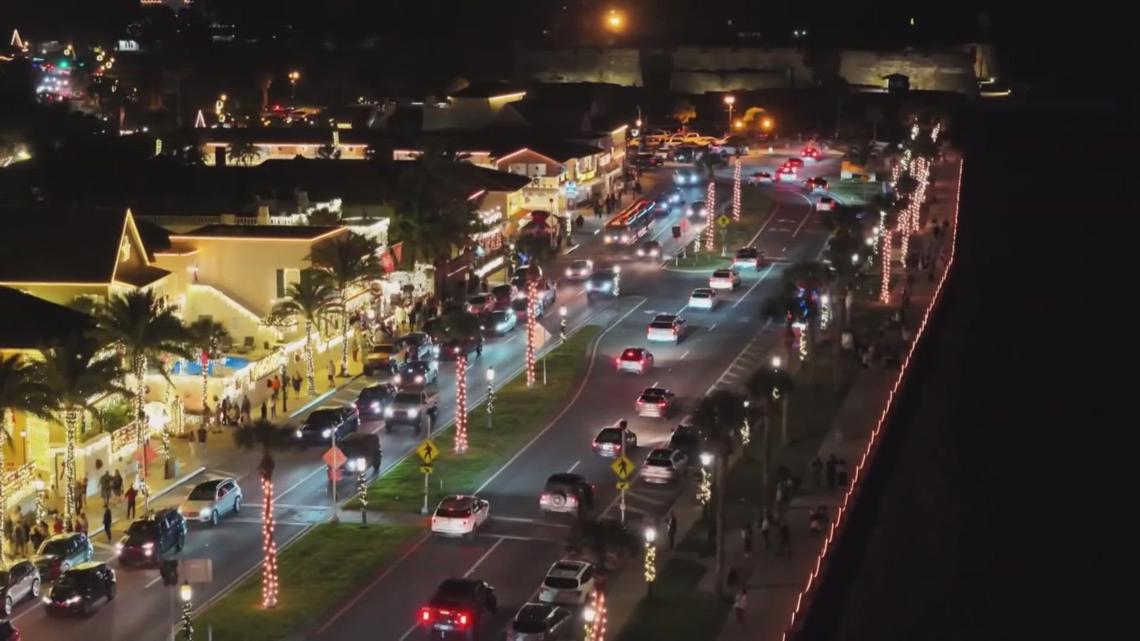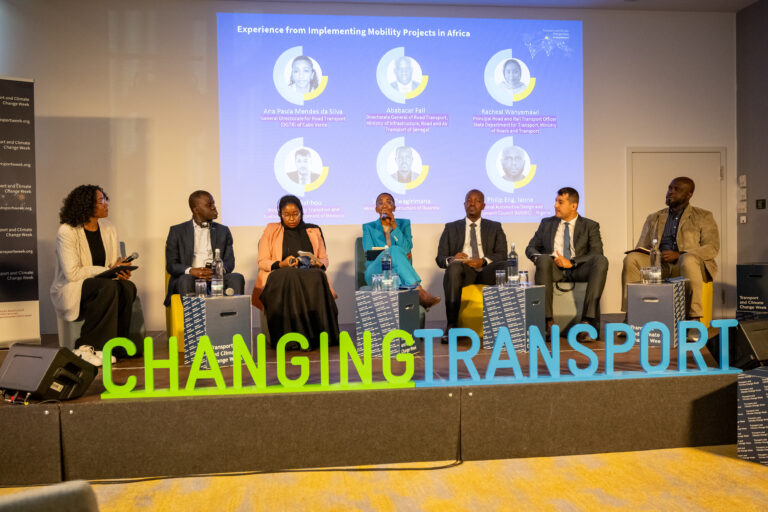St. Augustine implements changes to Nights of Lights to ease traffic congestion and control crowds – firstcoastnews.com

Report on Urban Management Strategies for the St. Augustine “Nights of Lights” Festival
Introduction: Aligning with Sustainable Development Goal 11
The City of St. Augustine has implemented a series of strategic changes for its annual “Nights of Lights” festival. These measures are a direct response to logistical challenges experienced in the previous year, including record crowds, severe traffic congestion, and inadequate public facilities. The new framework is designed to enhance public safety, improve traffic flow, and ensure the event’s long-term viability, directly aligning with the principles of Sustainable Development Goal 11 (Sustainable Cities and Communities).
Core Challenges and Strategic Responses
According to City Manager David Birchim, the city was unprepared for the volume of visitors in the previous year, necessitating a revised approach to crowd and traffic management. The primary challenges identified were:
- Vehicular traffic paralysis in the downtown area.
- Pedestrian safety risks due to individuals walking in roadways.
- A significant shortage of public restroom facilities.
Key Initiatives for Sustainable Urban Mobility and Infrastructure (SDGs 9, 11, 13)
To address these issues and advance sustainability targets, the city has enacted several key initiatives:
-
Promotion of Public and Sustainable Transport
- The city has expanded its satellite parking capacity and is promoting the use of a free shuttle service to transport visitors into the downtown core.
- This initiative directly supports SDG 11.2 (access to sustainable transport systems) and contributes to SDG 13 (Climate Action) by reducing the number of private vehicles and associated emissions.
-
Financial Disincentives for Private Vehicle Use
- The fine for improper parking in residential areas has been increased from $30 to $100.
- The fee for the main downtown parking garage has been raised from $20 to $40 during shuttle operating hours to discourage driving into the city center. A discounted rate of $3 remains for registered local residents.
- These financial measures are designed to manage urban congestion in line with SDG 11.
-
Enhancing Pedestrian Safety and Public Health (SDGs 3, 11)
- Physical barricades will be installed to guide pedestrians and keep them on sidewalks.
- Police officers will be stationed at intersections to manage both pedestrian and vehicular traffic flow, mitigating the previous year’s issue of pedestrians disregarding traffic signals.
- These actions directly address SDG 3.6 (reducing road traffic injuries) and SDG 11.7 (providing access to safe and inclusive public spaces).
-
Improvement of Public Sanitation and Services
- The city is deploying an additional 70 portable restrooms throughout the downtown area.
- This measure supports SDG 3 (Good Health and Well-being) and SDG 11 by ensuring adequate sanitation infrastructure for large crowds.
Supporting Local Economy and Innovation (SDGs 8, 9)
The city’s plan also incorporates measures to support the local workforce and leverage technology:
- Workforce Support: Designated parking areas have been established for individuals employed in the downtown district. This supports SDG 8 (Decent Work and Economic Growth) by ensuring the local labor force can access their workplaces, which is crucial for sustainable tourism.
- Technological Innovation: A new “Nights of Lights” mobile application has been launched. The app provides real-time information on the locations of restrooms, parking facilities, and shuttle services. This use of technology aligns with SDG 9 (Industry, Innovation, and Infrastructure) by creating a more efficient and user-friendly urban experience.
Conclusion: A Comprehensive Approach to Sustainable Event Management
The City of St. Augustine’s revised strategy for the “Nights of Lights” festival represents a comprehensive model for sustainable event management. By prioritizing public transportation, enhancing safety infrastructure, and leveraging technology, the city is actively working to create a more resilient, safe, and accessible urban environment, reflecting a strong commitment to the Sustainable Development Goals.
Analysis of Sustainable Development Goals in the Article
1. Which SDGs are addressed or connected to the issues highlighted in the article?
-
SDG 11: Sustainable Cities and Communities
This is the most prominent SDG in the article. The entire focus is on managing a large-scale city event to make it safer, more accessible, and less disruptive for residents and visitors. The city of St. Augustine is implementing measures to handle traffic congestion, crowd control, and infrastructure strain, which are core components of creating sustainable urban environments.
-
SDG 3: Good Health and Well-being
The article addresses public safety, a key aspect of well-being. By implementing measures to prevent pedestrians from walking in the streets and improving traffic control, the city is actively working to reduce the risk of road traffic accidents and injuries.
-
SDG 8: Decent Work and Economic Growth
The article touches upon sustainable tourism and its economic impact. The “Nights of Lights” is a major tourist event that supports the local economy. The city’s efforts to manage the event sustainably ensure its long-term viability. Furthermore, the provision of dedicated “workforce parking areas” directly supports the employees of downtown businesses, ensuring they can get to their jobs, which is essential for economic activity.
-
SDG 9: Industry, Innovation and Infrastructure
The city is upgrading its infrastructure to cope with the event’s demands. This includes expanding satellite parking (transport infrastructure), adding 70 new restrooms (sanitation infrastructure), and introducing a new mobile app (digital infrastructure) to provide information to visitors. These actions align with developing reliable and sustainable infrastructure to support well-being and economic activity.
2. What specific targets under those SDGs can be identified based on the article’s content?
-
Under SDG 11 (Sustainable Cities and Communities):
-
Target 11.2: By 2030, provide access to safe, affordable, accessible and sustainable transport systems for all.
The article details the city’s push for a sustainable transport solution by “urging visitors to ride a free shuttle into downtown” from expanded “satellite parking lots.” This is a direct attempt to reduce the number of private vehicles paralyzing the city with traffic and provide an accessible alternative.
-
Target 11.6: By 2030, reduce the adverse per capita environmental impact of cities.
While not explicitly stated, reducing massive traffic jams by promoting shuttle use helps lower vehicle emissions and air pollution. Additionally, addressing the “shortage of bathrooms” by installing 70 more facilities is a form of managing municipal services and sanitation under the pressure of large crowds.
-
Target 11.7: By 2030, provide universal access to safe, inclusive and accessible, public spaces for all.
The city is working to make the downtown area safer during the event. Measures like “barricades that look like bike racks will keep pedestrians on the sidewalks and out of the streets” and placing “police… at intersections directing traffic” are aimed at ensuring safe access to the public spaces where the event takes place.
-
Target 11.2: By 2030, provide access to safe, affordable, accessible and sustainable transport systems for all.
-
Under SDG 3 (Good Health and Well-being):
-
Target 3.6: By 2020, halve the number of global deaths and injuries from road traffic accidents.
The article highlights the danger from last year when “pedestrians walked in the streets stopping traffic.” The new safety measures, including barricades and police traffic direction, are explicitly designed to prevent such situations and reduce the risk of accidents involving pedestrians and vehicles.
-
Target 3.6: By 2020, halve the number of global deaths and injuries from road traffic accidents.
-
Under SDG 8 (Decent Work and Economic Growth):
-
Target 8.9: By 2030, devise and implement policies to promote sustainable tourism that creates jobs and promotes local culture and products.
The city’s comprehensive plan to manage the “Nights of Lights” event is a policy implementation for sustainable tourism. By mitigating negative impacts like traffic and crowding, the city ensures the event can continue to benefit the local economy. The specific provision of “workforce parking areas” shows a commitment to supporting the local labor force that is crucial to the tourism industry.
-
Target 8.9: By 2030, devise and implement policies to promote sustainable tourism that creates jobs and promotes local culture and products.
-
Under SDG 9 (Industry, Innovation and Infrastructure):
-
Target 9.1: Develop quality, reliable, sustainable and resilient infrastructure… to support economic development and human well-being.
The article mentions several infrastructure developments: increasing “spaces at satellite parking lots,” placing “70 more restrooms around downtown,” and launching a “Nights of Lights app.” These physical and digital infrastructure upgrades are designed to make the city more resilient to the massive influx of visitors and improve their experience.
-
Target 9.1: Develop quality, reliable, sustainable and resilient infrastructure… to support economic development and human well-being.
3. Are there any indicators mentioned or implied in the article that can be used to measure progress towards the identified targets?
-
For Target 11.2 (Sustainable Transport):
An implied indicator is the proportion of visitors using the public shuttle service versus private vehicles. The city manager’s goal is “to have as many people parked at our shuttle park and ride locations.” Success could be measured by tracking shuttle ridership and the number of cars parked in the downtown garage, especially given the financial disincentive ($40 fee) to park downtown.
-
For Target 3.6 (Road Safety):
A direct indicator would be the number of traffic incidents or accidents involving pedestrians during the event. The article states the problem was “pedestrians walked in the streets.” A reduction in such incidents compared to the previous year would indicate progress.
-
For Target 11.7 (Safe Public Spaces):
An indicator could be the number of public order disturbances or safety-related complaints. The implementation of barricades and police presence is a response to last year’s chaos. A decrease in complaints about crowding and unsafe pedestrian behavior would measure success.
-
For Target 9.1 (Infrastructure):
A clear indicator is the number of additional sanitation facilities available per capita (or per estimated visitor). The article explicitly states the city is “placing 70 more restrooms.” Another indicator is the adoption rate and usage of the new “Nights of Lights app” by visitors to access information.
-
For Target 8.9 (Sustainable Tourism):
An implied indicator is the availability of dedicated parking for the local workforce. The article mentions the creation of “workforce parking areas.” The number of spaces provided and their usage rate by downtown employees would measure the effectiveness of this policy in supporting the local economy during the peak tourist event.
SDGs, Targets, and Indicators Summary
| SDGs | Targets | Indicators (Mentioned or Implied in the Article) |
|---|---|---|
| SDG 11: Sustainable Cities and Communities | 11.2 Provide access to safe, affordable, accessible and sustainable transport systems for all. | Proportion of visitors using the free public shuttle service. |
| 11.6 Reduce the adverse per capita environmental impact of cities. | Number of additional public restrooms available to manage sanitation. | |
| 11.7 Provide universal access to safe, inclusive and accessible, public spaces for all. | Reduction in instances of pedestrians walking in streets, enforced by barricades and police presence. | |
| SDG 3: Good Health and Well-being | 3.6 Halve the number of global deaths and injuries from road traffic accidents. | Number of traffic accidents or incidents involving pedestrians during the event. |
| SDG 8: Decent Work and Economic Growth | 8.9 Devise and implement policies to promote sustainable tourism. | Number of dedicated parking spaces provided for the downtown workforce. |
| SDG 9: Industry, Innovation and Infrastructure | 9.1 Develop quality, reliable, sustainable and resilient infrastructure. | Number of downloads and usage rate of the new “Nights of Lights” mobile app. |
Source: firstcoastnews.com
What is Your Reaction?
 Like
0
Like
0
 Dislike
0
Dislike
0
 Love
0
Love
0
 Funny
0
Funny
0
 Angry
0
Angry
0
 Sad
0
Sad
0
 Wow
0
Wow
0
















































/environment-climate-change-and-health-(ech)/water-sanitation-hygiene-and-health-(wsh)/landfill-tuvalu-36092.tmb-1200v.jpg?sfvrsn=5c21fe40_1#)

.jpg.webp?itok=0ZsAnae9#)

























